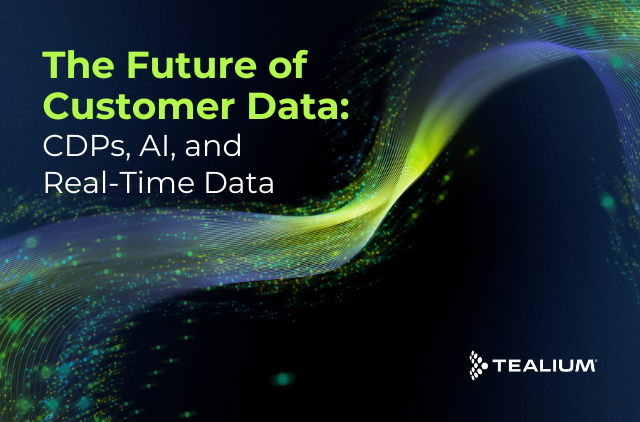Breaking up with third party cookies requires unique decisions for every organization, but these five steps will send you down the right path.
The demise of third party cookies, along with a host of market forces restricting data management practices, has transformed how organizations need to approach managing data for customer experience. Where it once was simple and legal to buy data in a murky marketplace of rich personal insights on individual consumers (albeit not always accurate), has given way to a market where privacy and data protection are the #1 priority for customer experience and compliance.
Note: First party cookies and third party data will still be around. Here we are discussing third party cookies. Read this blog for the differences between third party data and third party cookies.
The good news is, this is a significant opportunity to set up for the long haul and there are solid solutions available. The internet hasn’t stopped evolving since its inception and this is a moment in time where there’s an opening to become more strategic with your approach instead of layering on the next hack. What you do today could very well become a foundation for your customer relationships over the next decade and beyond.
To effectively compete in the [third party] cookieless world of 2024 and beyond, it’s critical that brands prepare now. This means new ways of using data for the targeting, insights, and measurement that comprise customer experience. While the individual needs for this transition are wildly different from business to business, the following considerations should be made by all businesses as they plot their data foundation for the future.
To prepare, take these 5 steps:
- Audit Your Media Campaigns
- Implement Privacy by Design Into Your Media Campaigns
- Build Out First (and Yes, Zero) Party Data Assets and Your Ability to Use Them
- Experiment Now (NOT once 3rd party cookies have died)— With Legacy and Emerging Technologies, and With Direct Buying
- Rethink Identity
Auditing Your Media Campaigns
 The most drastically impacted channel by third party cookie loss is media. In order to build resilience in your data foundation, and retain your ability to effectively target customers, it’s critical to understand how dependent your current media programs are on third party cookies. Do not mistake this for third party data overall as where third party cookies are going away entirely, certain types of third party data will actually help you close that gap.
The most drastically impacted channel by third party cookie loss is media. In order to build resilience in your data foundation, and retain your ability to effectively target customers, it’s critical to understand how dependent your current media programs are on third party cookies. Do not mistake this for third party data overall as where third party cookies are going away entirely, certain types of third party data will actually help you close that gap.
While you may continue to leverage third party cookie-based targeting strategies in the near term, it’s essential to begin to understand how well new strategies will perform in order to strategically manage this transition. This audit of digital media purchasing can be completed internally or with the help of agency partners to determine your risk exposure.
The degree to which your media programs are impacted intrinsically depends on (1) the nature of your customer relationships, and (2) your strategy in targeting customers. The more direct your customer relationships, the less dependent you will be on third party cookies. And the more you focus on performance marketing versus brand awareness, the more your business will generally depend on third party cookies.
Read about how establishing customer trust through privacy benefits customer experience.
Implement Privacy by Design into Your Process
Once you understand where your programs are most at risk, you can begin to address the processes and practices you’ll need in place to both reduce ongoing risk and drive a differentiated customer experience. The departmental and technological silos that once were just part of doing business, must now fall for CX to thrive. Data collection must be purposeful, controllable, and well understood.
Work across the organization, including groups like legal, privacy, product and others, to bake privacy compliance into the very fabric of how customer programs are born and managed. Our most successful customers take a center of excellence approach that incorporates multiple perspectives from the very beginning of planning. This will ensure data collection and activation strategies are always considered together and with a well rounded perspective that respects privacy.
Read our Org of the Future white paper for advice on how to structure your organization to best maximize the value of customer data.
Build Out First (and Yes, Zero) Party Data Assets and Your Ability to Use Them

First party data can help to close part of the gap being opened up by third party cookie deprecation. It’s reliable, controllable, resilient over time, and, depending on how well you collect it, rich. Your best customer relationships contain the seeds for more customers. With mastery over first party data not only can you provide the best possible experience for your most valued customers (a strong justification in itself), but you can use this data at the heart of customer acquisition strategies as well through strategies like lookalike targeting.
This data should be at the heart of your strategy (for more than just advertising). The more you can rely on this data, the less you have to depend on buying it from others, whether that takes the form of directly buying third party data or using someone else’s first party data (like walled gardens)…both of which will set you back.
This means you both need to have useful data, and be able to use it. Having useful data means engaging in successful value exchanges with customers to build up your volume of consented, privacy-safe data. Being able to use it means having both the technology and the will (organizational culture is a huge factor of success) to put it to use.
Read our white paper on how a first party data strategy helps you provide the best CX
Experiment Now— With Legacy and Emerging Technologies, and With Direct Buying

Every company will have a varying capability to collect and use first party data, along with varying dependence on current third party cookie-based strategies. As such, each company’s strategy to transition will be unique. This means experimentation is critical. And that experimentation will be most successful the earlier it’s done.
Failed tests now merely mean continuing to rely on traditional targeting and measurement strategies. Failed tests in 2024 have no reliable alternative, creating a massive risk profile for your business. Test new strategies such as Google’s Privacy Sandbox (Topics API, formerly FLoC), contextual targeting, third party cookie replacements like UID 2.0, and data clean rooms.
Without developing these options now, there’s a high likelihood of dependence on walled gardens, and their exorbitant media costs, in the future.
Watch this webinar on a specific type of first party data, conversions data, for an example of the types of new data management tactics that are now necessary.
Rethink Identity

Third party cookie alternatives are diverse and numerous (side note: don’t get stuck narrowly just trying to “replace” usage of third party cookies as first party data has a wide world of benefits far beyond simple replacement, but I digress). From vendors offering their own universal IDs, to their own identity graphs, to those seeking to use email addresses for interoperability, businesses need to plan for many different and uncertain possibilities. Identity solutions also tend to be costly. This creates a large incentive to take ownership of what you can based on the customer relationship at your disposal, and the skillet of your current and future organization.
This also goes hand in hand with the experimentation advised above. A strategy wholly owned by you with 90% effectiveness could very well be cheaper and more affordable than one with 99% effectiveness through a media vendor. In reality, it’s likely there will be a spectrum of possibilities, and these possibilities will also change over time. This means owning and controlling what you can, while maintaining the agility to do so.
Read more about Tealium’s approach to the fragmented and uncertain identity landscape here.
The steps above represent the most critical considerations for plotting a course for the third party cookieless future. While each section above could be considered at great length beyond what’s included, hopefully this provides a useful approach for strategizing your next steps. And of course, if there’s any way we can help, please reach out today and we’d love to help.








